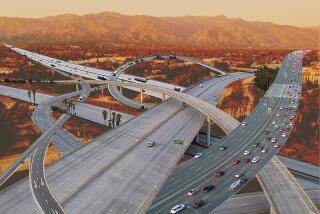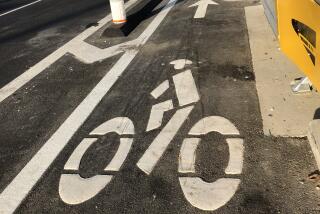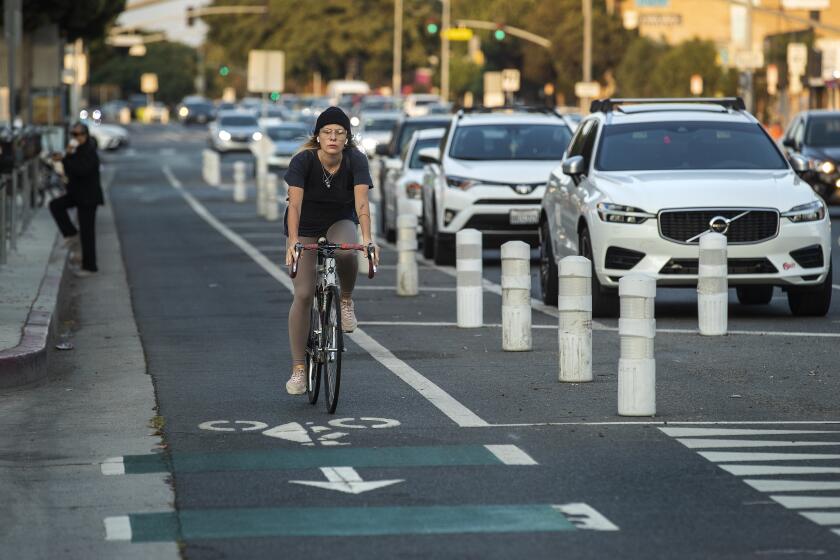Inquiring Drivers Want to Know: What’s a SigAlert in the No. 1 Lane?
- Share via
Loyd Sigmon, the fellow who invented the traffic bulletin known as a SigAlert, died earlier this week. The term became a part of radio broadcasts nearly half a century ago and yet, as his obituary noted, the question asked most frequently of traffic reporters today is: What’s a SigAlert?
It’s an unplanned lane blockage of at least half an hour. (Might not sound like much to a nonresident, but we locals know how a spilled tennis shoe in one lane of a freeway can tie up everyone for hours).
Anyway, in case you were wondering, the late traffic reporter Bill Keene once told me the second most-asked question of people in his profession is: What’s the No. 1 lane (as in traffic is jammed in the No. 1 lane)?
Easy. It’s the slow lane. Oops. I mean, the fast lane. Sorry for the sudden lane change.
Origins: The “Sig” in SigAlert, as I hope you know by now, came from Sigmon’s name. The term was not named after a bumper car ride on the Santa Monica Pier (see photo).
SigAlert ban: Ted Hartwell of Encinitas says the lucky folks in the San Diego area never have SigAlerts.
“The term most often used here is ‘tighten,’ ” Hartwell said. “A reporter will say that on the southbound 5 the traffic is tightening up. Not sure what that means -- sounds like a SigAlert to me. But the term may sound too ‘L.A.’ for San Diego people.”
Speaking of euphemisms: Dick Jackson of Arroyo Grande saw some interesting wording on a traffic sign in Florence, Ore. (see photo).
Who are they kidding? Dan Fink of L.A. was one of several readers who spotted some questionable information on a traffic barricade in West L.A. (see photo). I’ve been driving for years in that area, and I can’t ever remember the traffic being calm south, or north, of Pico Boulevard.
Unclear on the concept: In the parking category, Elizabeth Oreck found herself unable to think through the meaning of a drive-through sign (see photo).
miscelLAny: The other day, I quoted a theory that driving on the left side in Britain dated to the era when knights kept their swords on the left side.
They didn’t want an approaching enemy to pass on that side.
But, I asked, why did the Brits start driving their carriages on the right side when they settled in America?
Several readers responded, including Jerry Snyder of Torrance, who noted, “By the time they came to America, firearms were the weapon of choice. And a right-handed person kept his firearm on the right.” It was time to change sides.
*
Steve Harvey can be reached at (800) LATimes, Ext. 77083, by fax at (213) 237-4712, by mail at Metro, L.A. Times, 202 W. 1st St., L.A. 90012, and by e-mail at steve.harvey@latimes.com.





